To some people, streets are nothing but roads that lead to one’s destination – a path that must be traversed as a necessary evil in their day-to-day lives.
To some extent, that may be true.
After all, how many people can honestly say that they look forward to battling it out with the thousands of commuters fighting for a tight spot inside one of the overcrowded coaches and buses in the metro to catch a ride home, or climbing up and down those steep, grimy footpaths under the blazing midday sun?
How many people can honestly find thrill in wading through murky, knee-deep waters during one of those floods that the country has become tragically known for, or find pleasure in navigating through mazes of streets littered with trash, animal, and other unspeakable waste?
Probably not a lot.
Yet, while some have learned to filter these images from their consciousness and look the other way, there are those who faced them head on and took them all in – saw them not as ugly realities that need to be concealed, but complex stories of life and humanity that need to be explored.
Julius Andres Manzano is one of the latter.
His experiences photographing the streets of Manila, Baguio, Ilocos, and even his native city of Lucena have made him a seasoned photographer – but more than that, it turned him into an impassioned storyteller, and this week, he’s sharing his precious time to give us a view of the world he sees behind his lens.
When and how did you get your start in photography?
I believe it all flourished from my early interest in photographs of people and places. When I was a small boy, our relatives from abroad would send us National Geographic magazines, and I really enjoyed looking at the photos of people from different cultures. I was fascinated by how the images evoked a variety of emotions in me and let my mind wander in imagination with the stories it conveyed.
I think this became an early visual exercise for me. It unconsciously taught me to become more curious of my surroundings and how to “see” the world from a different perspective. From then on, I told myself that I was going to be a photographer someday and take photos like those in the magazines.
I bought my first camera in 2010, and I instinctively began to photograph everything around me and explored more of photography and its genres, but even before then, I can say that I was already a curious observer taking photographs in my head, and when I finally got my first camera, I started to take the sort of photographs that I wanted to see and I never stopped since then.
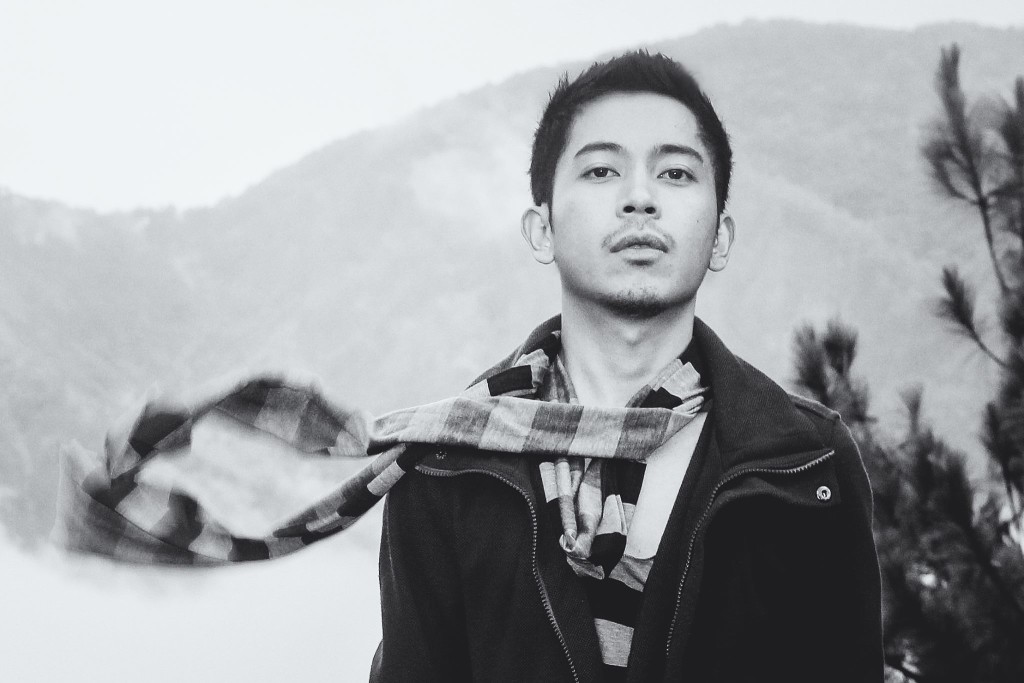
Photo courtesy of Julius Andres Manzano
Was there a picture that left such a lasting impression on you that it made you want to pursue photography?
I would say the iconic “Afghan Girl” by Steve McCurry. I saw this picture on the cover of a National Geographic magazine as a child and those beautiful haunting green eyes became engraved in my psyche. Those piercing green eyes staring right into your soul and the ambiguity of her expression really conveyed a sense of wonder in me. I have seen a lot of great photographs from that magazine, but this one struck me and remained with me. This is how powerful this photograph is, and I think it inspired not only me but many photographers to try to capture the unique emotions that this photograph exhibits and the emotions that it makes us feel.
Did you take any formal lessons in photography? How about apprenticeships?
I’m mostly self-taught and much of what I know I learned through reading, studying the photographs of master photographers, and taking photographs a lot. When I felt that I needed to expand my conceptual and creative practice, I took a short workshop on fashion and portraiture photography to learn about studio lighting, working with live models, and set design. That was pretty much it. I don’t really have formal educational qualifications as a photographer, just the school of life and the world around me. I learned most by taking photographs – a lot of photographs.
How about extended trips on a quest to learn more about the world while honing your craft?
When I was starting with street photography, I used to frequent Intramuros, Quiapo and some parts of Manila because it seems that it’s where everyone was going for street photography. I also had memorable photographic trips in Baguio and Vigan City. But going to all these places only taught me that photography is more about embracing the essence of your curiosity and exploring subjects that you have a strong interest in – and that can be anywhere. You can go a thousand miles away from home, or you can go a thousand miles deep within your own community – photography works both ways.
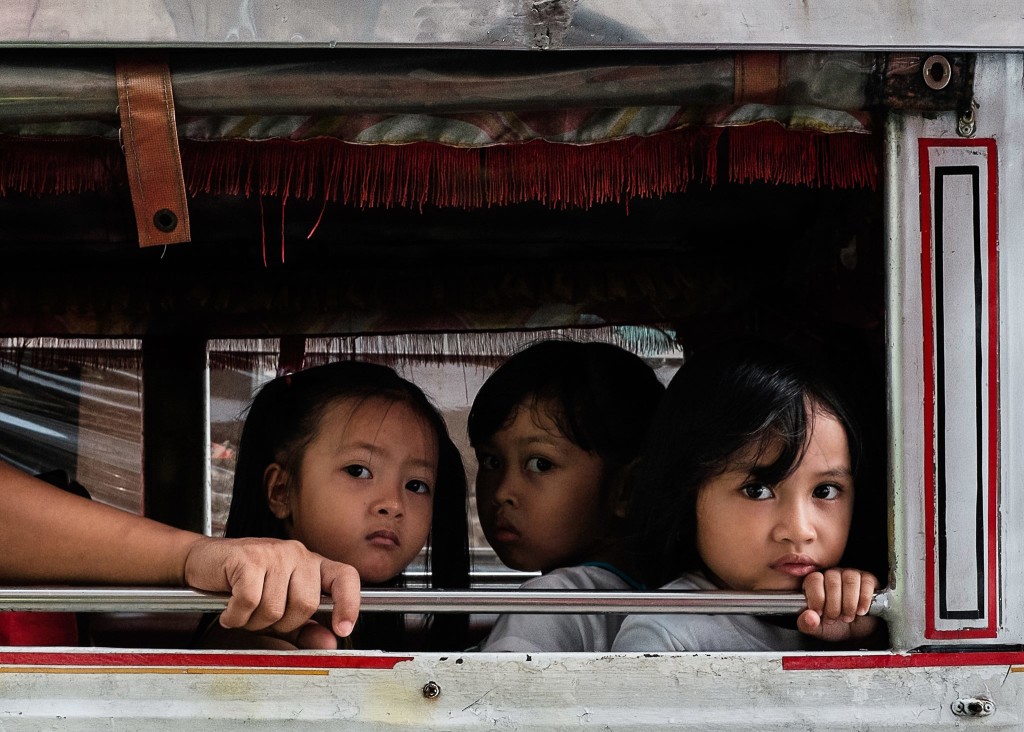
Photograph and caption by Julius Andres Manzano
What made you interested in street photography? What do you think sets it apart from other types of photography?
Street photography is one of the hardest forms of photography and probably the only genre which doesn’t have a concrete definition, and what sets it apart from other genres is that it is instantaneous and you have no control over what might happen. So unlike working in a studio where you have full control of the light, your subject, composition, and your own visual concepts, street photography is more on the spot. You can only work with what life gives you at that moment, so you have to be careful and make sure that you capture it with tasteful composition and content.
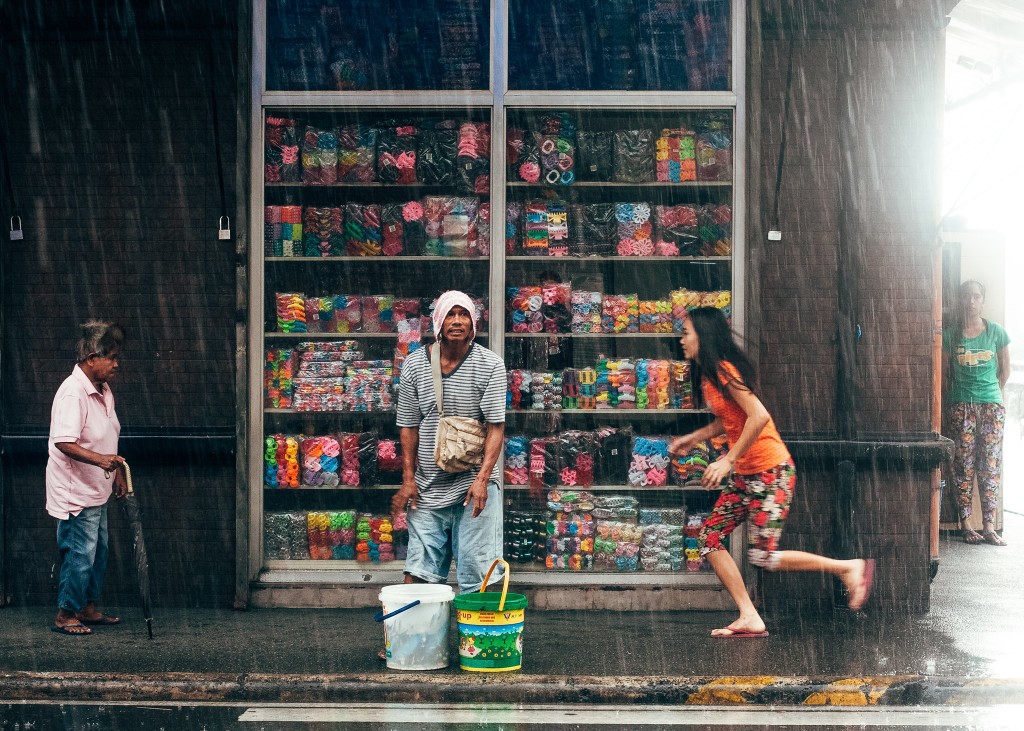
Photograph and caption by Julius Andres Manzano
The extraordinary moments out there in the world that might go unnoticed is captured by street photography. These moments appear and disappear in a matter of seconds so you have to be really quick because once you missed it, these moments are gone forever, and I like the challenge of that. I like the excitement brought by uncertainty. I like that I am able to express myself by responding and capturing the moments and scenes that life offers me. I like that I can show you what you didn’t notice because you were too busy to look, but most of all I like to capture the humanity of the moment that is happening and disappearing right in front of us, moments which can either make us laugh, sad, think, or perhaps remind us of someone we know. Those reasons are what drawn me to street photography.
Who, what, or which places are your favorite subjects?
I love to photograph people in their most natural state and capture the unguarded moments of human nature. I think people are the best subjects because there is usually some emotional connection that forms between the viewer, the photographer, and the subject of the photograph as a whole. I don’t have a particular preference for locations because, for me, where there is life, there are photographs.
Have you taken a photo that you are particularly fond of? Would you mind telling us why?
This is probably the hardest question out of the bunch because for someone who takes photographs daily, the favorites also change regularly; but for this set of questions, I would say the photograph which I titled “Shadows on a Yellow.”
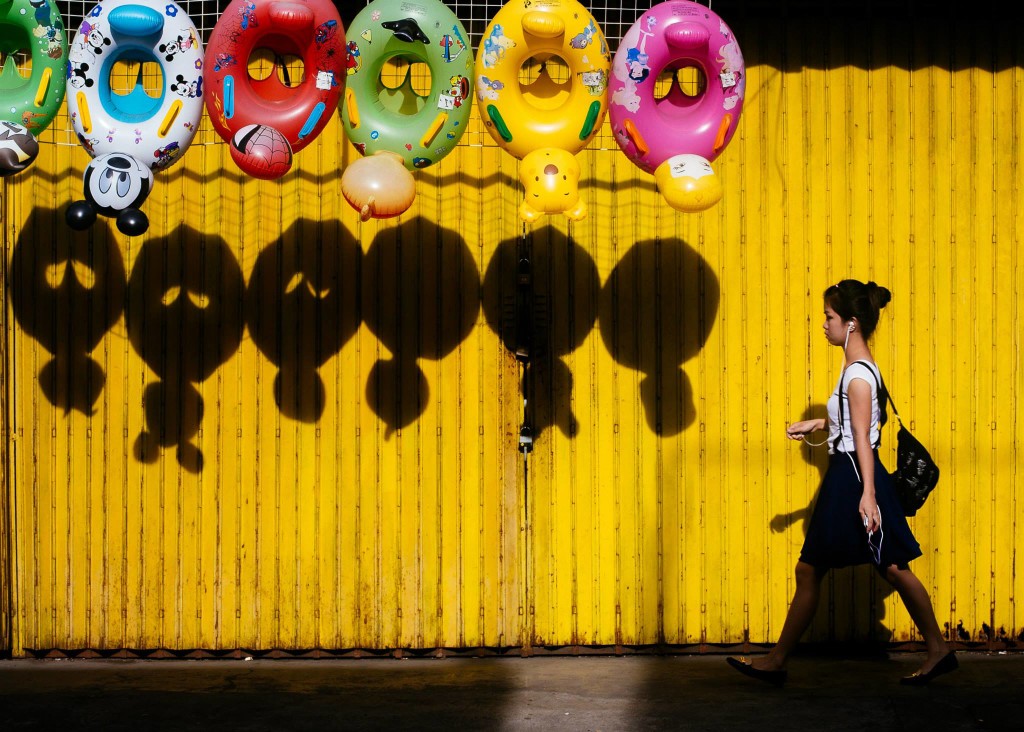
Photograph and caption by Julius Andres Manzano
This photograph is what made me realize the beauty of light, shadows, colors, geometry and humanity that naturally exists in Lucena City. As I mentioned, I used to frequent other places for my street work, but one day, I decided to try to venture out in my own city and from then on I became more enamored of photographing it ever since. When I looked at this photograph, I thought to myself, “Why photograph the streets of other cities when my own city has so much to offer to me?” Now, my current body of work is 90% made in Lucena City and I am proud of it because these are the photographs which gave way for me to be featured in international publications.
As a street photographer, what has / have been the most rewarding moment/s or experience /s for you so far?
Coming home knowing that I got a good photograph is always a rewarding experience for me. The feeling is similar to hunting and exploring, and then coming home with a good catch. Also, meeting new people, discovering interesting places, and understanding your community better.
Are there notable achievements that you are particularly fond of?
For my most recent one, I have to say being chosen as a finalist for the Miami Street Photography Festival 2015. Now, I consider this as an achievement because this is known to be the “Olympics of Street Photography,” so being a finalist is already a big thing for me.
The chosen finalists for this festival represent the best of contemporary street photography picked by notable photographers from the industry and will be exhibited at the History Miami Museum in Miami, Florida. I have always dreamed of being part of this festival and I really worked hard for a strong entry so this is something that I am really proud of achieving. My greatest achievement, on the other hand, is still yet to come. (I’m that optimistic!)
What do you think is / are the most important thing /s that people interested in pursuing photography should learn (both in terms of skills and life lessons)?
Be curious. Do not be afraid to make mistakes. Don’t fear failure and take it one step at a time. Follow your photographic obsessions and make work that is meaningful to you. Do not be highly influenced by what everyone else is doing and saying because photography is a visual language so you need to speak it with your own voice.
Learn from master photographers. Read about them, study and look at all their works, and once you’ve learned everything you need from them, go on your own photographic journey and develop your own vision. Most importantly, take a lot of photographs and just enjoy the process.
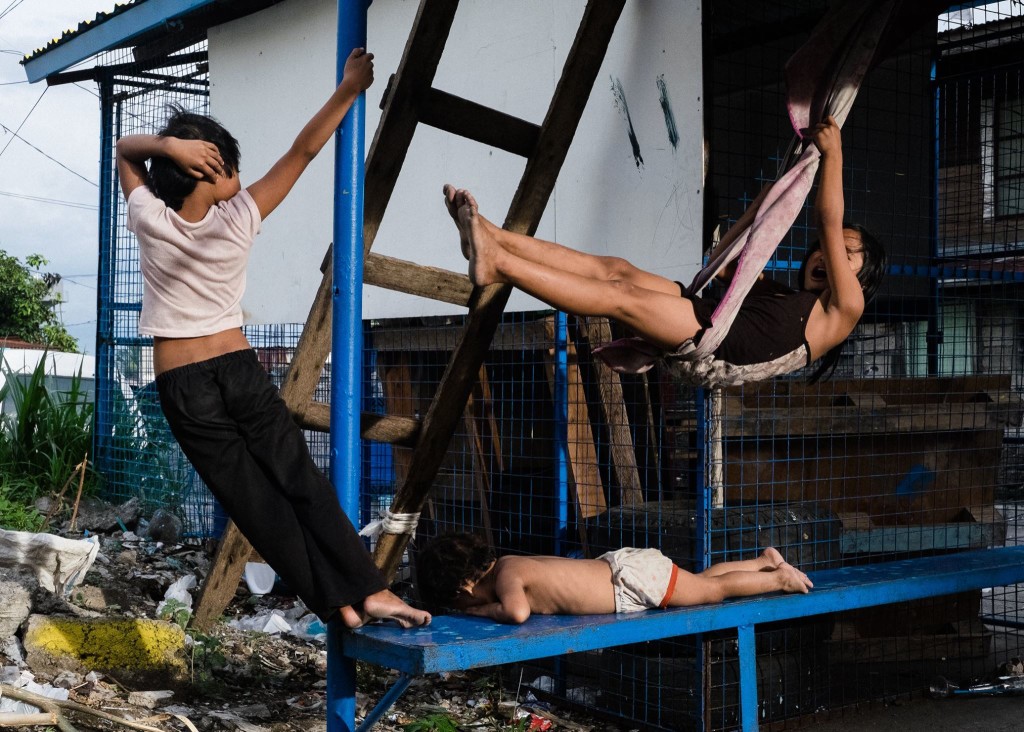
Photograph and caption by Julius Andres Manzano
We noticed that your works have been featured in some international magazines. Would you mind sharing the places or publications where your works have been featured with our readers?
I had multiple publications at the Inspired Eye Magazine US. Three of my photographs were chosen to be part of the World Street Photography 2015 photo book published by Gudberg Nerger in Germany, as well as the World Street Photography exhibit in Hamburg. The former is special to me because the sales from this photo book went to Ashalayam (House of Hope) charity in India.
One of my photographs was also featured at the Photoquai Biennale Catalogue in Paris for “The Human Condition” mission by EyeEm.com. I am a regular contributor at the PhotoVogue gallery curated by the Photo Editors of Vogue Italia, and some of the images I submitted there were picked by senior photo editor Alessia Glaviano to be part of the “Best of PhotoVogue.”
Recently, I was chosen as a finalist for the Miami Street Photography Festival 2015. A selected photograph of mine will be exhibited at the History Miami Museum starting this mid-November until January of 2016.
This is the first time I enumerated all these as I never really thought about it too much. Looking back at how I started from scratch, I have to say that I am really grateful for getting this far.
Are there photographers that you look up to? Can you please tell us why you admire them?
There are a handful of photographers that I look up to. Steve McCurry for showing me the world and opening my eyes to photography. Andre Kertesz for creating a new world for photography. Henri Cartier-Bresson for giving a name and setting a standard to this new world which we now know as street photography. Sebastiao Salgado for making us aware of the sufferings of humanity in this world. Elliott Erwitt for his great sense of humor. Vivian Maier, Garry Winogrand and Helen Levitt for documenting the beauty and fringes of humanity for the mere love and joy of it. Alex Webb, Fred Herzog, Constantine Manos and Harry Gruyaert for their inspiring use of light, shadows, and color. Trent Parke for his innovative approach. Brassai for his night photography. And Annie Leibovitz, Mario Testino, Patrick Demarchelier and Guy Bourdin for stretching my creativity with their artistic visions. These are mainly the photographers who inspired and shaped me as the photographer I am now. And I would recommend anyone interested in photography to read about them and look at their works.
Are there people outside the world of photography who, in one way or another, have inspired you to pursue the craft?
My late grandmother always encouraged me with the arts. My grandparents raised me and growing up she always encouraged me to draw and to read. So I think, although it happened indirectly because she already passed away a year before I even started with photography, she was the one who always motivated me to pursue such craft. And I know that she would have respected and adored my work and appreciated every bit of what I do.
Have you been pursuing photography as a hobby, as a job, or as both a job and a hobby? Would you mind telling us where or for what types of events have you worked for?
Right now it is more of a hobby. I have had offers to cover events and recently to cover for a political campaign, but I enjoy not having any deadlines as of the moment. Just taking photographs for myself is my main objective but I don’t really mind going on assignments in the future.
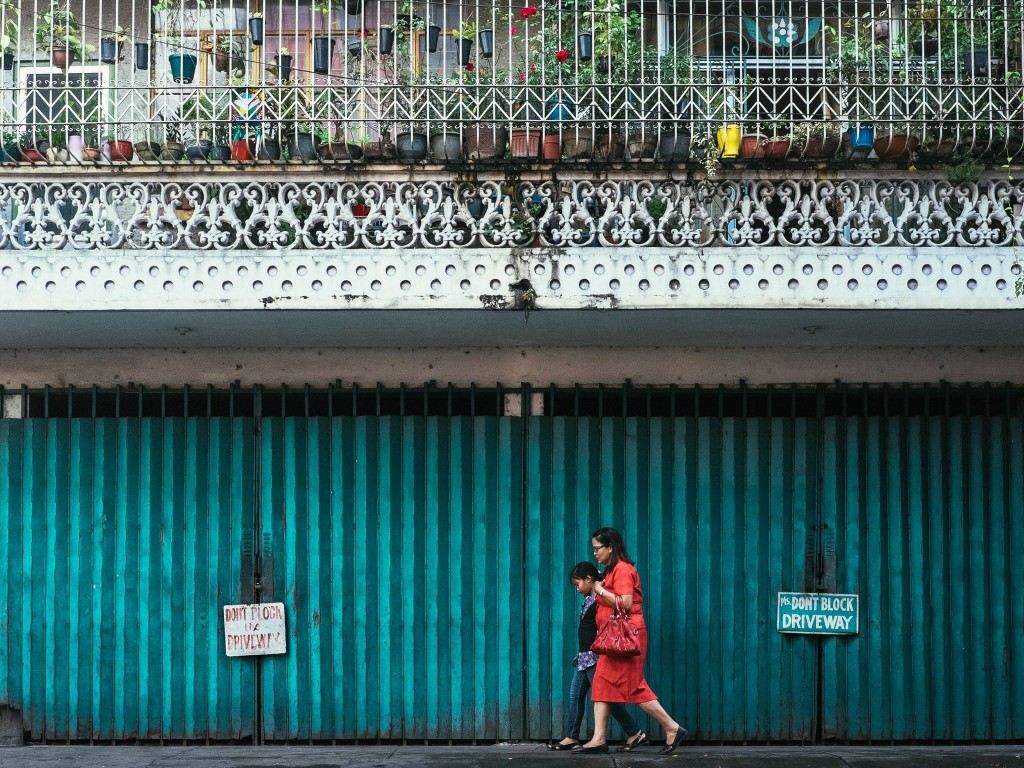
Photograph and caption by Julius Andres Manzano
Is there something that you haven’t been able to try as a photographer that you’d like to have the opportunity to try soon?
I’d really like to try Macro Photography and capture the tiniest and intricate details of life invisible to the naked eye. Isn’t it just amazing to know that there is a whole different world when we look closer at things? I’d like to give my own perspective to these tiniest details of life.
Are there any upcoming activities or projects that you can share with the people interested in your works?
I have an ongoing long-term project the details of which I can’t share for now, but it’s all related to my love of taking photographs of the human condition and the changes or awareness it may bring. I have also thought about having a photo exhibit here in Lucena City showcasing all the street photographs I took here. And the catch is, if you see yourself in one of the photographs then you can have it for free.

 Philippine Peso
Philippine Peso